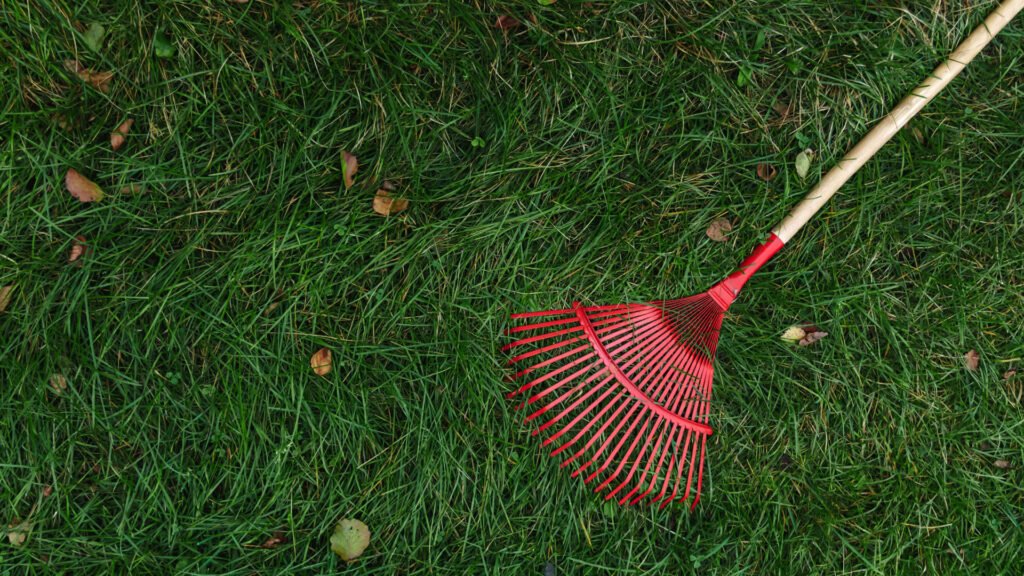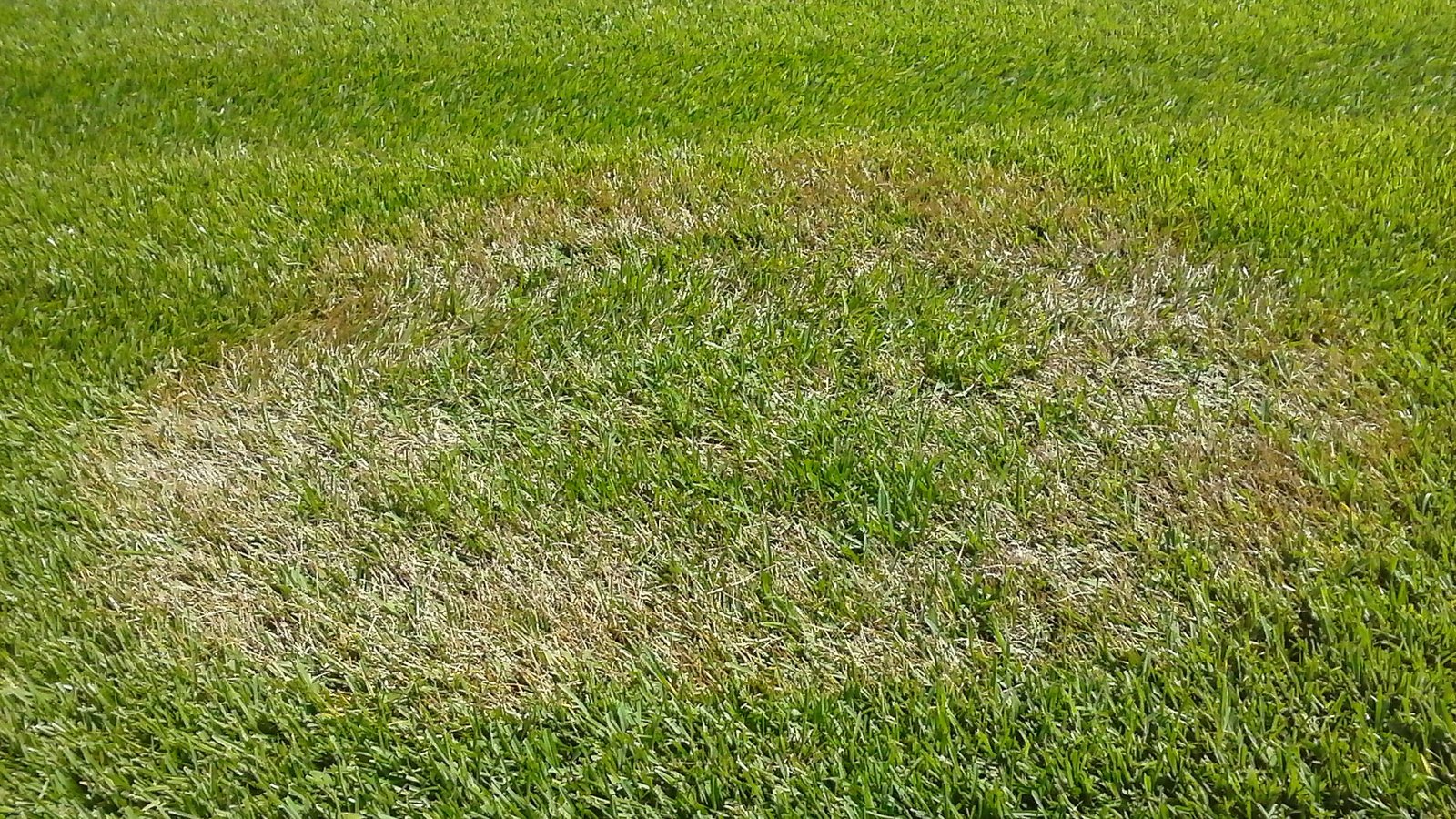There are many causes that might generate brown, dead grass patches on your lawn, but only one is given the formal label brown patch. Brown patch disease is caused by the Rhizoctonia fungus, which is most often Rhizoctonia solani. When the weather is hot and humid, the fungus generally emerges around the middle to late summer. Brown patch is a foliar disease, which means it affects the grass blades but not the plant’s crown or root system. 1 Brown patch-affected grass plants may recover on their own without the use of chemicals. Rhizoctonia may impact all cool-season lawn grasses, although ryegrass and tall fescue are particularly vulnerable. Although Kentucky bluegrass and fine fescues are rarely impacted, the damage is typically minor. Brown patches may harm a wide range of warm-season grasses, including zoysiagrass and St. Augustine grass.
When Should Brown Patch Fungus Be Removed?
Aeration and dethatching should be the first steps in controlling brown patches in the spring. Fungicide should be used when fungal patches form, which is normally in the middle to late summer. Where required, reseeding with various grass species may be done by over-seeding over multiple autumn seasons or by removing the old turf grasses in the spring and reseeding immediately if you desire faster results.
Before You Get Started
The Rhizoctonia fungus may live in the soil for a long time before causing brown patch disease. The fungus overwinters in the lawn grass or soil underneath it as sclerotia, or fungal bodies, and may live for years until the correct circumstances arise. Rhizoctonia is more likely to create a brown patch in the midto late-summer when nighttime temperatures are consistently over 68 degrees Fahrenheit, and daytime temperatures are consistently in the 80s or above. Periods of wet weather, when the air is saturated with moisture, help the sickness to manifest. Excess nitrogen and irrigation, in addition to heat and humidity, are the key variables that encourage brown patches, which implies that even the lushest and green lawns may be prone to brown patches. Lack of air circulation, poor soil drainage, heavy thatch, and compacted soils are additional contributing causes, making poorly kept lawns susceptible to brown patch disease.
Fungicide powders and sprays are generally less harmful to pets and people than most herbicides and pesticides, although certain formulations have been known to irritate eyes, and others have been known to induce throat irritation and to cough when breathed. Individuals who use fungicides often or who are exposed to high levels of fungicides may have more severe health concerns. Brown patch illness may not need all of the measures listed below. When your efforts bear fruit, you may stop working. The amount of time and work necessary will be totally dependent on the intensity and persistence of the infestation— minor issues may be very simple to resolve, but combating a broad infestation might take a year before using chemical fungicides attempt to manage brown patch fungus by modifying cultural practices.
Identify the Illness
Brown patch appears as uneven brownish-yellow circular spots on the grass that vary in size from 6 inches to several feet in diameter. Close examination reveals tan-colored, irregular-shaped lesions with a dark brown border on the damaged leaves, which normally stay erect. Early in the morning, white, cottony mycelium may be observed on the dew-covered lawn. The ring is best evident first thing in the morning. The grass inside the ring might be completely dead, giving the area a sunken appearance, but more frequently than not, the grass within the ring just thins down and becomes thinner than the surrounding lawn.
Increasing Air Circulation

Many instances of a brown patch may be healed simply by increasing lawn air circulation, which lessens the dampness that the fungus thrives on—aerating and dethatching the grass once a year is the best method to achieve this. Dethatching may be done by hand with a stiff bow rake or dethatching rake or by renting power equipment from home stores and tool rental shops. Aeration is usually done by renting a power tool or hiring professional lawn care.
Change Your Cultural Habits
Because brown patch fungus flourishes in moist, fertile environments, the best way to combat persistent lawn issues is to limit lawn feeding and ensure proper watering procedures. Reduce the quantity of fertilizer you apply and avoid feeding your lawn during hot and humid weather. Manufacturers of fertilizer sometimes promote many heavy feedings, yet your lawn is typically healthier with only one or two modest feedings each year. If you receive 1 inch of rain every week, you probably don’t need to water at all. If you do, water early in the day so the grass can dry completely by dark. If dew collects on your lawn every morning, you generally don’t need to water it at all. Standing dew may be removed from the grass by running a water hose over it, reducing the humidity that promotes brown patch disease.
Fungicide should be used
Fungicide treatment is only recommended for high-value ryegrass and bentgrass turf mixes; according to lawn care experts, most lawns recover without the use of chemicals. The initial fungicide treatment should be sprayed as soon as symptoms show, particularly if hot and humid weather is forecast. Although consumers may buy fungicides, it’s ideal for working with a lawn care firm that has specialists on staff who are trained to identify and treat grass diseases. It’s advisable to spot-treat unhealthy spots rather than spraying chemicals all over the lawn, as with any chemical treatment.
Reseed with Grass Varieties That Are Resistant
If all else fails, reseed with a turfgrass type that has been shown to be resistant to this fungus. A number of grasses with intermediate resistance to the Rhizoctonia fungus are available. Consider top-seeding your lawn with resistant grasses if a brown spot appears every year. For ideas on resistant grass species, contact your local university extension department.





